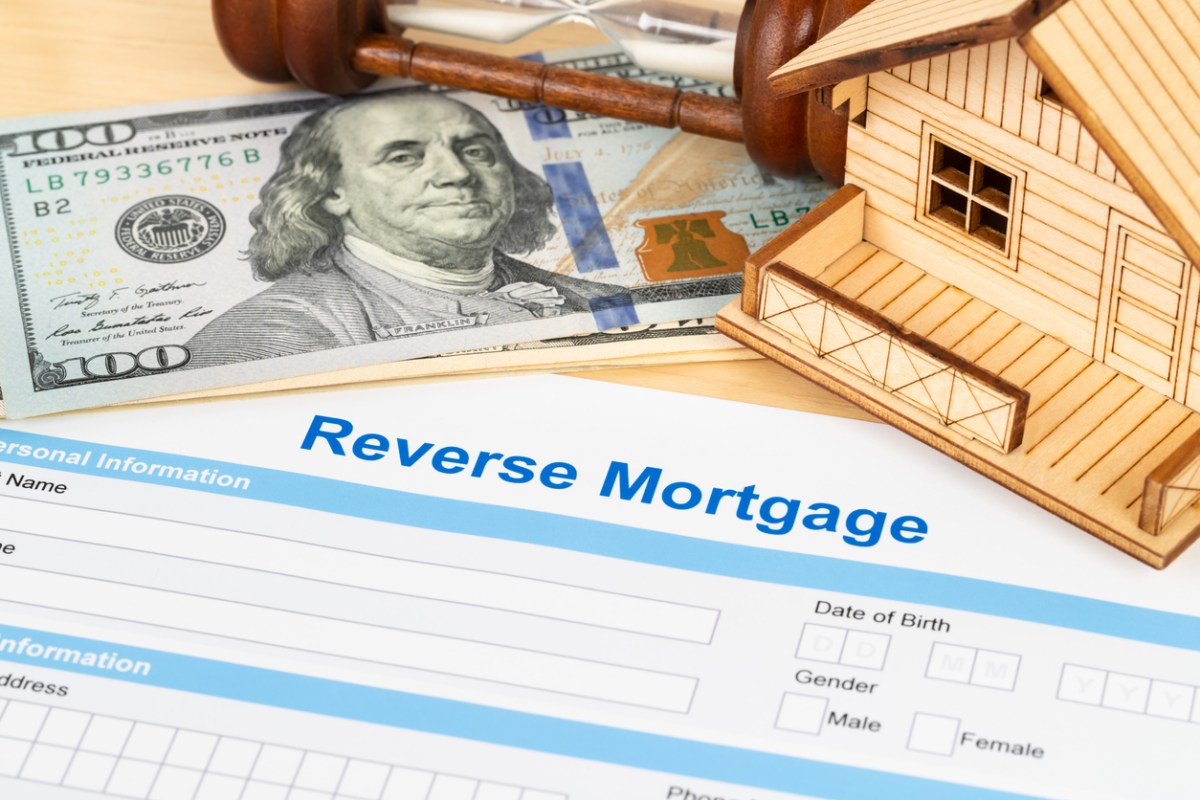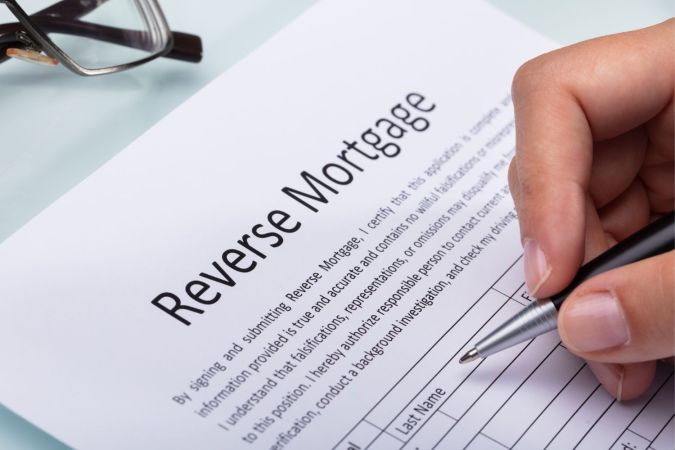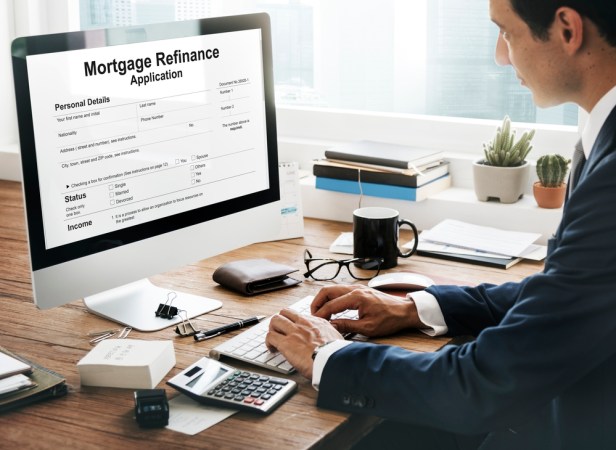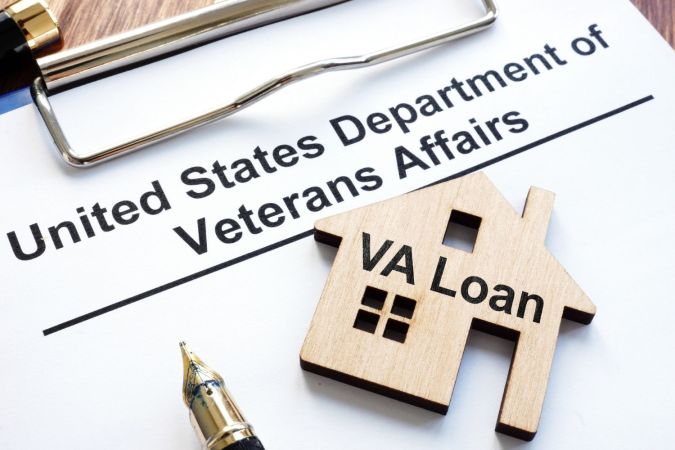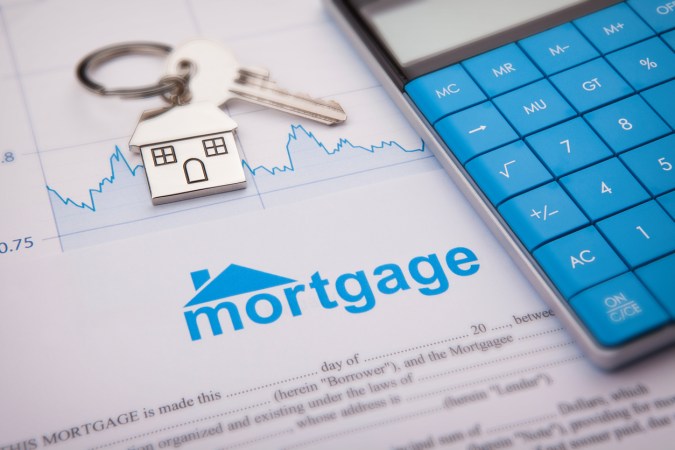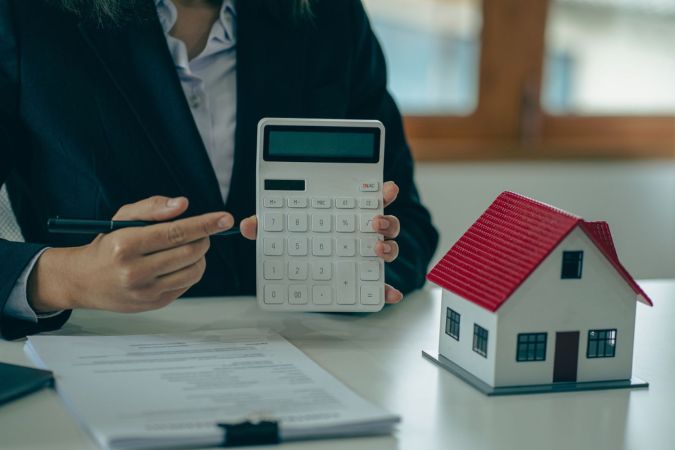We may earn revenue from the products available on this page and participate in affiliate programs. Learn More ›
Q: My wife and I recently retired and are finally getting around to some much-needed home renovations. We don’t want to drain our retirement fund to update our house, though. Our friend suggested taking out a reverse mortgage to cover our renovation costs, but we’ve never heard of that type of loan. What is a reverse mortgage, exactly?
A: Managing household finances during retirement can get complicated, especially if homeowners are looking to make a major purchase like renovating an outdated kitchen or building a house addition. Your friend is right that a reverse mortgage can help pay for home renovation costs—as well as a number of other expenses. In fact, reverse mortgages are designed with retirees and older homeowners in mind, giving them an opportunity to use their accumulated home equity on day-to-day costs or larger purchases.
What is a reverse mortgage? It’s a specialized type of home loan in which the lender makes payments to the borrower using home equity as the basis for the loan amount. Taking out a reverse mortgage does come with some caveats, though, and it may not be the best financial option for every household. To determine if a reverse mortgage is right for them, homeowners first need to understand a few reverse mortgage facts, including lending limits, eligibility requirements, and what kinds of financing options are available with this type of loan.
A reverse mortgage is a type of home loan that lets retirees and older adults extract equity from their homes.
Every time a homeowner makes a mortgage payment, they gain equity in the home by chipping away at the loan balance. Homeowners can tap into that equity to take out loans and finance purchases. A reverse mortgage is a specialized type of home equity loan that is only available to homeowners over the age of 61 who meet certain eligibility requirements as outlined by their lender or the Federal Housing Administration (FHA).
Unlike typical home equity loans that have amortization schedules that begin immediately once the loan is originated, reverse mortgages do not have a strict repayment schedule. In fact, borrowers will not need to make regular monthly payments on this type of loan at all. That lenient repayment schedule is a large part of a reverse mortgage’s appeal for retirees living on a fixed income. Money comes into their accounts, but there’s no immediate need to start repaying the loan.

Eligible homeowners can convert a portion of their home equity into cash using a reverse mortgage loan.
Many people who choose to take out a reverse mortgage have completely paid off their original home loan, but borrowers who still have an outstanding loan balance can qualify as well. Borrowers may qualify for a reverse mortgage that’s worth a somewhat large percentage of their home equity or one that reflects a smaller portion of that equity. Lenders will not extend a reverse mortgage loan for the entire amount of home equity, however, even if the borrower has fully repaid their original mortgage. The exact size of the loan will depend on several factors including the home’s value, the amount of home equity accumulated, the amount left on the loan principal, and the borrower’s age.
The lender will pay out the loan to the borrower as a lump sum deposit or in recurring installments.
How does a reverse mortgage work in practice? Once the loan is approved, the lender will pay out the funds as either a single deposit or as monthly payments to the borrower’s bank account. Both approaches can have their benefits. Homeowners looking to make a large purchase, such as adding a room or remodeling a kitchen, may want to receive all of their reverse mortgage funds at once. On the other hand, retirees who want to access extra funds to help pay for their living expenses without draining their retirement savings prematurely may benefit from a recurring payment plan. Receiving reverse mortgage funds in the form of monthly payments can make it easier for retirees to pay for groceries, utility bills, home maintenance needs, and other routine expenses.

Lenders may also extend a line of credit based on the loan amount.
A lender could offer a third payment option as well: a line of credit. Rather than get all of their funds at once or distributed in smaller payouts each month, reverse mortgage borrowers may be able to open a line of credit that they can draw funds from whenever they want. As long as there is a remaining balance on the line of credit, homeowners can continue to pull money from it to help cover any costs that come up.
In some cases, lenders may offer hybrid payment plans—distributing some funds as a one-time deposit and setting aside other funds as part of a line of credit, for example. With that financial flexibility, homeowners can divvy up their reverse mortgage money according to their specific needs.
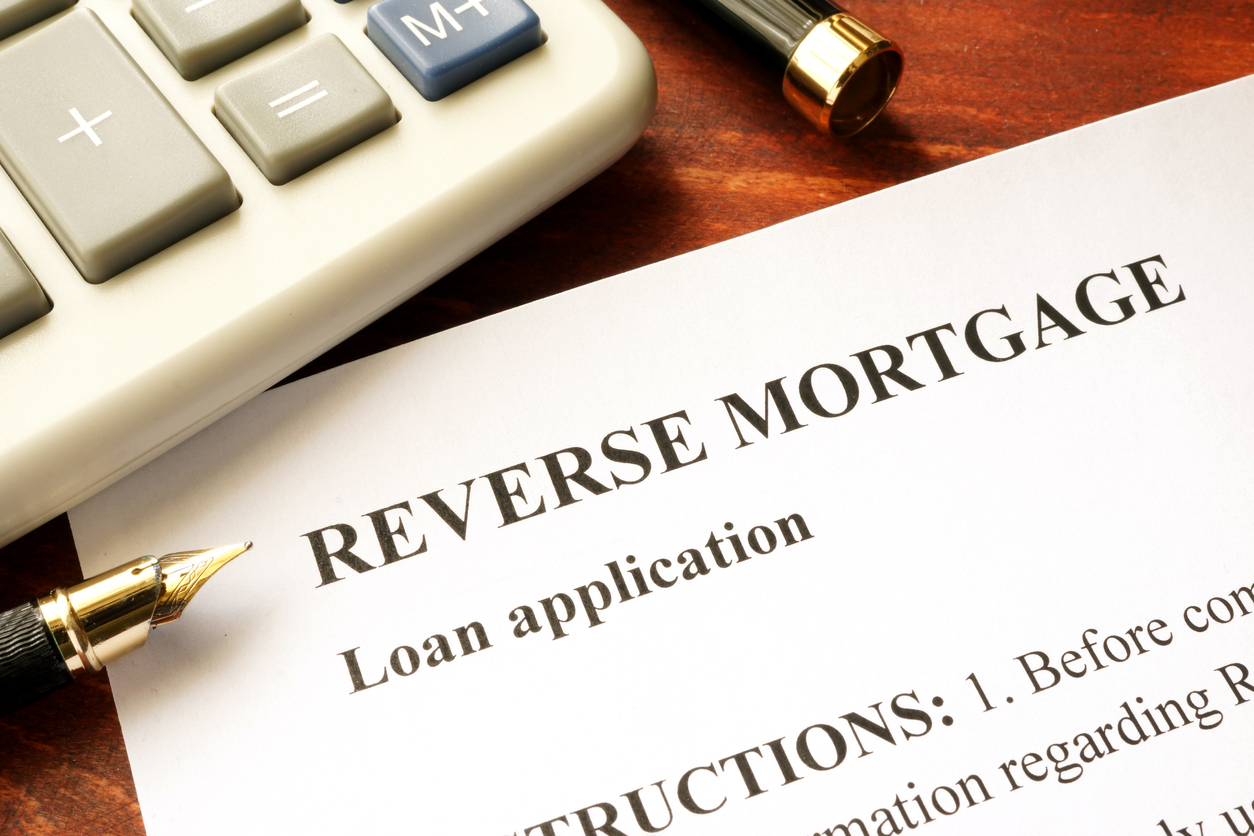
Retirees can then use those funds any way they choose—buy groceries, pay medical bills, or even make a down payment on a new house.
Reverse mortgage funding can be used to pay for a wide range of expenses because mortgage lenders do not typically place restrictions on how that money is spent. Some homeowners earmark their funds for major expenses like replacing faulty appliances, updating bathrooms, or installing new windows. Other borrowers may prefer to spend their reverse mortgage money on everyday expenses such as groceries or medication. It’s also not unusual for people to treat their reverse mortgage money as an emergency fund to cover unexpected costs that might spring up in the future—for instance, car repairs or medical bills. It’s even possible to use the funds from a reverse mortgage to make a down payment on a new house, which can help retirees cover the up-front costs of downsizing.
While reverse mortgage companies and private lenders are unlikely to limit how funds from this type of loan are used, organizations that offer single-purpose loans may set their own restrictions. Single-purpose reverse mortgages are far less common, however, so homeowners may not come across them as a financing option.
Homeowners can borrow against their home equity up to the lender’s reverse mortgage loan limits.
The maximum amount of money a borrower could receive from a reverse mortgage is based—to a degree—on the home equity they have accumulated in the property. However, loan amounts are often restricted by the lender’s loan limits, which will likely vary depending on the mortgage company. In addition, reverse mortgages backed by the federal government—known as Home Equity Conversion Mortgages (HECM)—must adhere to lending limits set by the Federal Housing Administration (FHA). The current HECM mortgage limit is $970,800, so that is the most a homeowner could qualify for with this particular type of reverse mortgage.
Loan amounts may be influenced by other factors as well, such as the amount of existing debt a person is carrying, their credit history, and their age. Lenders may have their own reverse mortgage requirements and eligibility standards, so it can be worth a homeowner’s time to shop around and see what they might qualify for with different mortgage companies. Using an online reverse mortgage calculator can help prospective borrowers figure out how much they could stand to borrow.
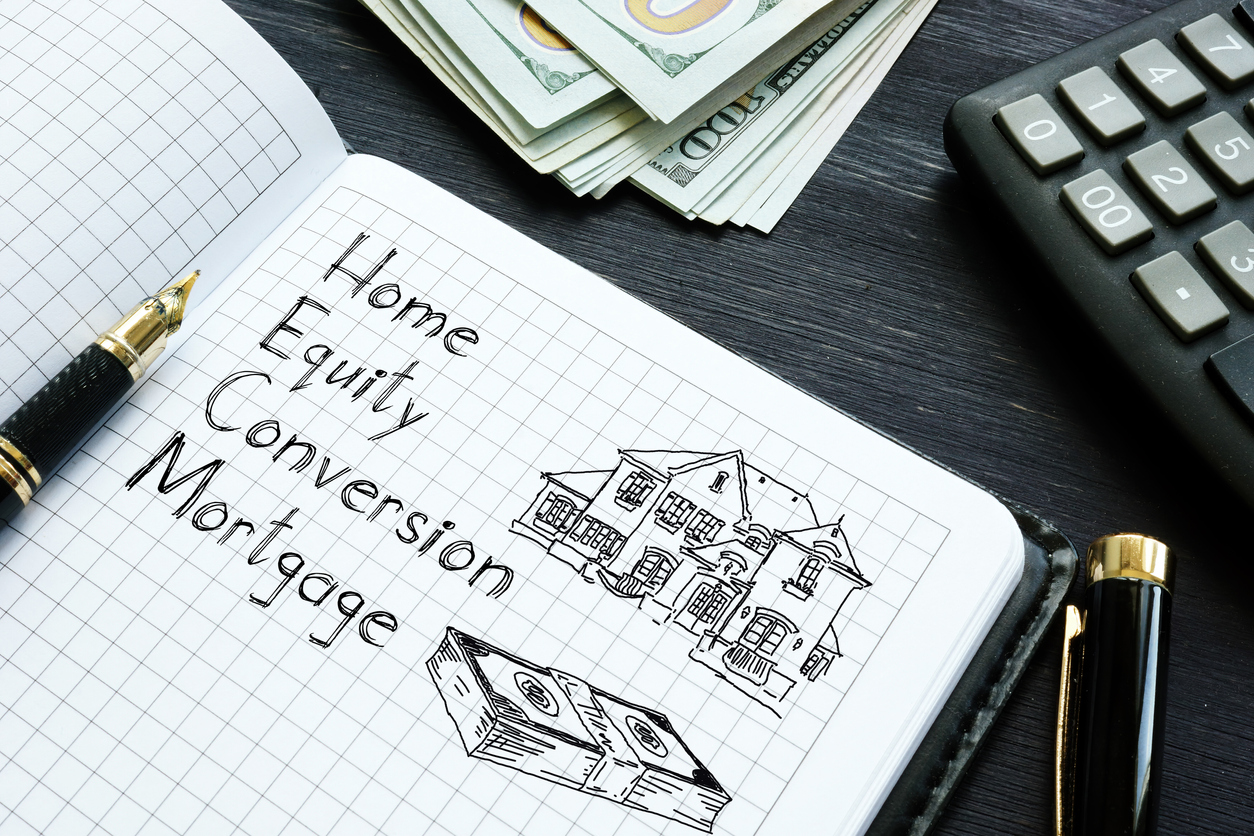
The loan balance won’t be repaid until the borrower sells the house, moves, or dies—in fact, borrowers may never need to repay a reverse mortgage themselves.
One of the perks of a reverse mortgage is that borrowers are not required to immediately begin repaying the loan amount. Borrowers can put off loan repayment for years because the loan balance is not due until the property changes ownership—either because the home was sold or passed down to a family member or loved one. If the borrower decides to sell the home, they would likely use the proceeds from the sale to repay the remaining loan balance. They could then use whatever money is left over to put toward a new home.
If the homeowners pass away before selling their property, they may never be required to repay their loan balance at all. Some homeowners even take out a reverse mortgage with no intention of ever paying back the full loan amount.
What happens if the property is passed down to a surviving family member, though? According to the terms of the loan agreement, the heirs could either repay the full amount out of pocket or sell the property and use that money to pay back the reverse mortgage.
Even though borrowers won’t make monthly mortgage payments, they will continue to owe taxes, insurance premiums, and other recurring housing costs.
Borrowers are not required to make payments on their mortgage principal or interest each month, but there are other recurring housing costs that they will need to keep up with during the life of a reverse mortgage. Potentially the two biggest expenses they will owe are property taxes and homeowners insurance premiums, which are often included in mortgage payments. Many reverse mortgage agreements require borrowers to stay current on their taxes and homeowners insurance. Failing to pay these expenses could result in the lender voiding the loan agreement and requesting that the remaining balance be paid in full.
Beyond those costs, there may be other expenses to account for as well, such as homeowners association fees and utility bills. While the prospect of eliminating monthly mortgage payments sounds appealing, homeowners should take a broader view of their housing costs so they know what their financial obligations might be with a reverse mortgage.

Reverse mortgages are only available to homeowners over the age of 61 who have accumulated significant equity in their homes.
Because reverse mortgage loans are tailored to the needs of retirees and older homeowners, lenders often have strict eligibility standards to meet. First, borrowers must be at least 62 years of age to qualify for this type of loan. Many lenders will also stipulate that homeowners have accumulated a certain amount of equity in their property before they can take out a reverse mortgage. In many cases, reverse mortgage rules dictate that eligible homeowners must possess at least 50 percent equity in their home, but that figure can vary from lender to lender.
As with any type of home loan, lenders will closely review the borrower’s financial history before approving a reverse mortgage. Carrying too much debt could prevent a homeowner from qualifying for this kind of mortgage, but the exact eligibility standards will depend on the mortgage company.
The property itself must also meet certain lender requirements to be eligible for a reverse mortgage.
The property itself needs to meet certain requirements to qualify for a reverse mortgage as well. Lenders will only provide a reverse mortgage on primary residences, so homeowners will not be able to take out a reverse mortgage on a second home or vacation property.
Properties used for reverse mortgages that are backed by the federal government will need to meet additional guidelines to qualify for this type of loan. Eligible properties must adhere to property requirements outlined by the FHA, which ensure that the home is in good condition and does not pose a safety hazard to its inhabitants. In addition, the FHA’s reverse mortgage criteria may exclude from eligibility certain property types such as tiny homes, kit homes, or container homes.
Home equity conversion mortgages—which are insured by the federal government—are the most common reverse mortgages.
Many homeowners who choose to take out a reverse mortgage will likely wind up going with one of the aforementioned government-backed loans since they are the most common type of reverse mortgage available. Home equity conversion mortgages are insured by the federal government, which helps reduce the amount of risk that lenders take on when they offer these loans. Government support also makes these loans more secure for homeowners, as HECM lenders are less likely to participate in predatory lending practices.
HECM loans offer many other advantages that could appeal to borrowers too. As noted, borrowers can receive their funds as lump sum payments, monthly installments, lines of credit, or some combination of those payment options. The government also doesn’t place any restrictions on how funds are used, so borrowers can use their HECM money to pay for whatever expenses they want without getting them cleared beforehand.
Proprietary reverse mortgages, on the other hand, are not backed by the federal government.
Lenders may offer their own reverse mortgage solutions that are not backed by the federal government at all—known as proprietary reverse mortgages. Not all mortgage companies offer this type of reverse mortgage, though, so its availability can vary significantly from lender to lender. Because these are lender-specific loan products, eligibility requirements are not consistent across the board. Interest rates and loan fees will likely change depending on which lender a borrower chooses to work with on their reverse mortgage.
At the same time, though, proprietary reverse mortgages are not beholden to federal reverse mortgage rules and regulations, so a borrower could theoretically take out a larger loan amount with this type of loan.

Single-purpose reverse mortgages may be an option as well—if you can find them.
Although not nearly as common as HECM or proprietary reverse mortgages, single-purpose reverse mortgages could be available to homeowners as an alternative to consider. These reverse mortgages are usually offered by nonprofit organizations or local government agencies, so their availability can vary quite a bit—they may be unavailable altogether in some areas of the country.
As the name suggests, a single-purpose reverse mortgage is intended to be used for a one-time expense rather than recurring costs that may be covered with a line of credit or monthly payments. In addition, organizations that offer this type of loan may need to sign off on the purpose of the loan before paying out any funds. There could be restrictions in place that would prevent borrowers from using reverse mortgage funding on their intended expenses.
Like any other home loan, a reverse mortgage uses the borrower’s property as collateral—but the borrower still owns their home.
Mortgages are secured loans, which means that the borrower needs to put forward some collateral on the loan. In the case of home loans, the property serves as collateral, and a reverse mortgage is no exception. When a homeowner takes out a reverse mortgage, they will use their home as collateral, but that does not affect their homeownership status. The borrower will continue to be the title owner even though they are using a portion of their own home equity to fund the loan.
Although there are typically no monthly payments to make on a reverse mortgage, it’s still possible to default on this type of loan. Often, defaults on reverse mortgages occur if the borrower fails to adhere to the terms of the loan agreement. One example would be if someone took out a reverse mortgage on their primary residence but then moved to a new home without selling the original property. The home would no longer be considered a primary residence and would lose its eligibility for a reverse mortgage.

And borrowers don’t need to pay taxes on reverse mortgages because those funds are considered a loan rather than income.
While homeowners will continue to owe property taxes on their home, they will not need to pay taxes on the funds they receive from their reverse mortgage. Because the funds from a reverse mortgage are a loan rather than income, the IRS doesn’t tax that money. In some cases, retirees may owe taxes on their retirement accounts, pensions, and even Social Security funds. When deciding how to budget for retirement and pay for everyday expenses, homeowners may want to consider the tax benefits of a reverse mortgage and how they may help save money in the long run. It’s also worth noting that because reverse mortgage funds are not considered income, they should not impact a borrower’s Social Security benefits status.
As with any type of financing, though, there are up-front costs to pay on a reverse mortgage.
There are several perks that come with this type of loan, but prospective borrowers should familiarize themselves with all reverse mortgage pros and cons before making a decision. For instance, although borrowers are not responsible for making regular payments on their reverse mortgage, they will owe some up-front costs before the loan is finalized. Origination fees are a common expense for any type of mortgage, and homeowners can expect to pay them when taking out a reverse mortgage as well.
A variety of closing costs that could be assessed as well, including appraisal fees, title search costs, government recording fees, and other expenses. Lenders may also charge servicing fees on reverse mortgages, adding to the total cost of taking out this kind of home loan. These costs are by no means unique to reverse mortgages, however; they are all typically assessed with any type of home loan.

A reverse mortgage could be a good idea if homeowners need extra funds to pay for retirement and they have accumulated significant equity in their home.
Reverse mortgages can be helpful for retirees who have built up a lot of equity in their home and want to put it to use rather than draw funds from their retirement or savings accounts. Even homeowners who have substantial savings to fall back on may prefer to convert their home equity into available funds instead of depleting other sources of money at their disposal.
Given the uncertainty that the future holds, homeowners may feel more comfortable using their home equity to pay for day-to-day expenses and keeping their savings accounts flush with money in case larger unexpected costs arise. A reverse mortgage can provide some breathing room for older adults who have done all they can to prepare for retirement but still want a little extra financial flexibility.
Reverse mortgages can also make sense for homeowners who don’t intend to pass their property down to family members or loved ones.
Reverse mortgages could be appealing to homeowners who don’t plan to ever sell their property or transfer ownership to a family member. Because the loan amount does not need to be repaid until the property changes hands, a homeowner who never sells their house won’t be required to pay back a reverse mortgage during their lifetime.
That same sentiment applies to homeowners who either don’t have any heirs or don’t plan to include their home in their will. As long as the property title does not pass to a family member, the homeowner’s relatives will likely not be required to repay any outstanding loan balances down the road.
But if the borrower’s relatives do inherit the property, then repaying a reverse mortgage could strain their finances.
The way reverse mortgages are structured can cause financial issues for family members if they take ownership of the property. Once the property is sold or the title is transferred to another owner, the outstanding loan balance will need to be repaid in full. If the original borrower is still living, then they will be required to pay back whatever funds they used from their reverse mortgage.
If the property was inherited, however, then the new property owner could be responsible for repaying the entire loan balance. Taking on that debt could place family members in financial hardship, and they may need to sell off the property in order to pay back the original reverse mortgage.
Also, be aware that private lenders may try to scam homeowners with predatory reverse mortgage offers.
Many private lenders that offer proprietary reverse mortgages are perfectly legitimate companies to work with, but that’s not always the case. Reverse mortgage scams do occur, taking advantage of borrowers who are unfamiliar with this type of loan. These kinds of scams can materialize in different ways, so it’s always a good idea to thoroughly vet any private lender offering proprietary reverse mortgages.
For instance, lenders may charge excessively high interest rates or fees that could be considered predatory because they far exceed what is typically charged in this space. Scammers may aggressively pitch their financing services to older adults and try to convince homeowners to take out a reverse mortgage to pay for unnecessary home renovations, a new house, or even make an investment.
Homeowners should never feel pressured to get a reverse mortgage—in fact, it’s important that they do their due diligence and make the best decision for their situation even if that means using another type of financing or holding off on a loan altogether. Homeowners can also avoid scams by getting an HECM with a lender that is approved by the federal government.
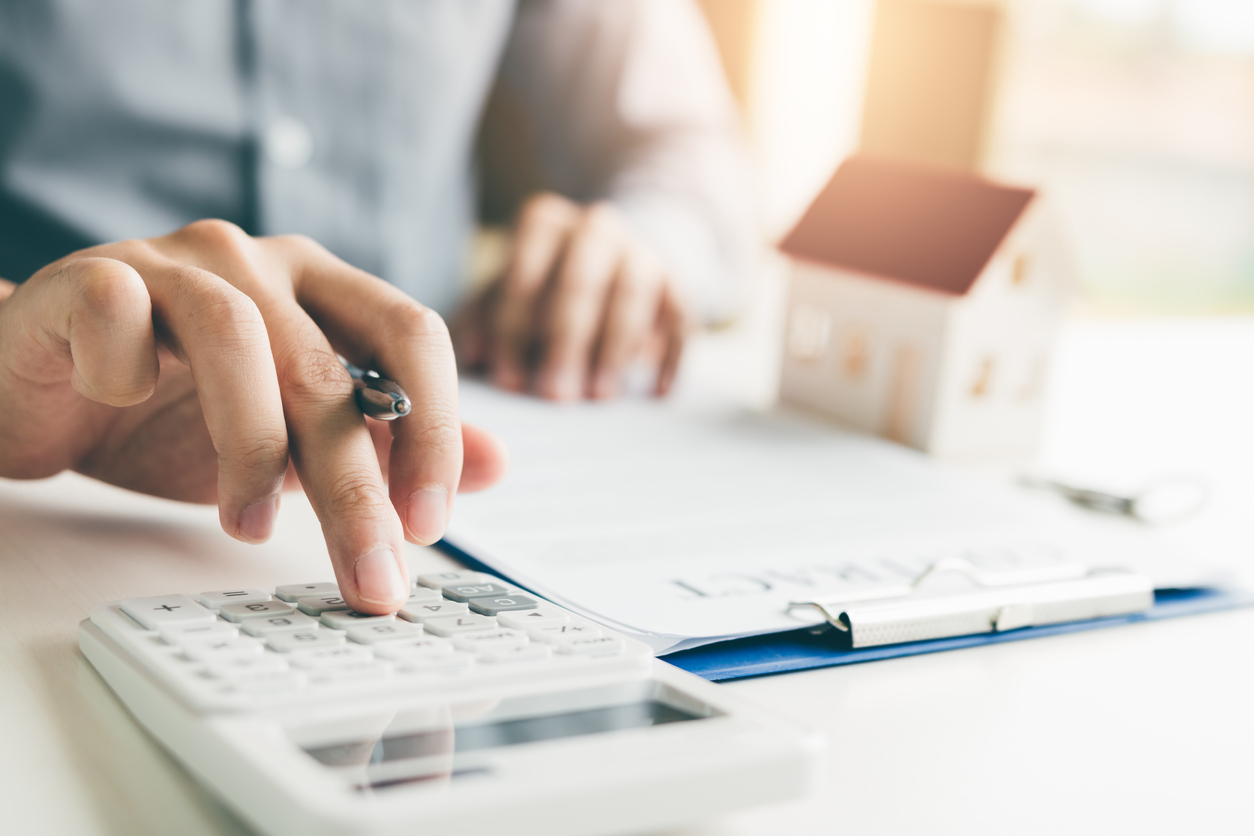
Home equity loans and home equity lines of credit (HELOC) are other financing options to consider if retirees want to tap into their home equity.
Reverse mortgages are not the only type of home loan that allows homeowners to convert their home equity into usable funds. Home equity loans and home equity lines of credit (HELOC) are common financing options that tap into accumulated home equity. Borrowers who use either a home equity loan or HELOC should know that, unlike a reverse mortgage, repayment begins as soon as the loan originates. They will likely need to make monthly payments on their loan balance for a set amount of time as outlined in the terms of their financing agreement.
There are many home equity loan advantages to consider, though. For instance, home equity loans may be easier to qualify for than other loans, and the interest could be tax-deductible if the funds are used to make home improvements. When considering a reverse mortgage, it’s worth also taking a look at the best home equity loans, HELOCs, and similar financing options, as they may have terms and conditions that better suit a homeowner’s needs.
If a preferred lender doesn’t offer reverse mortgages, home equity loans, or HELOCs, retirees could consider exploring their options by shopping around.
Mortgage companies don’t always offer loans that tap into home equity, including reverse mortgages. In some cases, lenders may offer certain types of home equity loans but not others. Homeowners who want to take advantage of a reverse mortgage, HELOC, or traditional home equity loan may need to shop around to find a lender that provides the exact financing terms they want.
Shopping around is often recommended even if a homeowner’s lender does offer these types of loans, as interest rates, eligibility requirements, and other mortgage terms can vary quite a bit from lender to lender. Reaching out to the best reverse mortgage companies (such as American Advisors Group or Longbridge Financial) to see what a homeowner may qualify for can help retirees find the right financing option to suit their budget and their retirement goals.

